Input interpretation

2-ethylhexyl acrylate
Chemical names and formulas
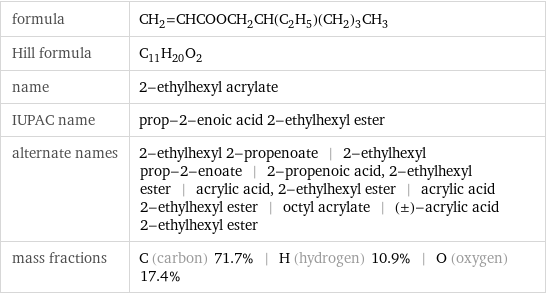
formula | CH_2=CHCOOCH_2CH(C_2H_5)(CH_2)_3CH_3 Hill formula | C_11H_20O_2 name | 2-ethylhexyl acrylate IUPAC name | prop-2-enoic acid 2-ethylhexyl ester alternate names | 2-ethylhexyl 2-propenoate | 2-ethylhexyl prop-2-enoate | 2-propenoic acid, 2-ethylhexyl ester | acrylic acid, 2-ethylhexyl ester | acrylic acid 2-ethylhexyl ester | octyl acrylate | (±)-acrylic acid 2-ethylhexyl ester mass fractions | C (carbon) 71.7% | H (hydrogen) 10.9% | O (oxygen) 17.4%
Lewis structure
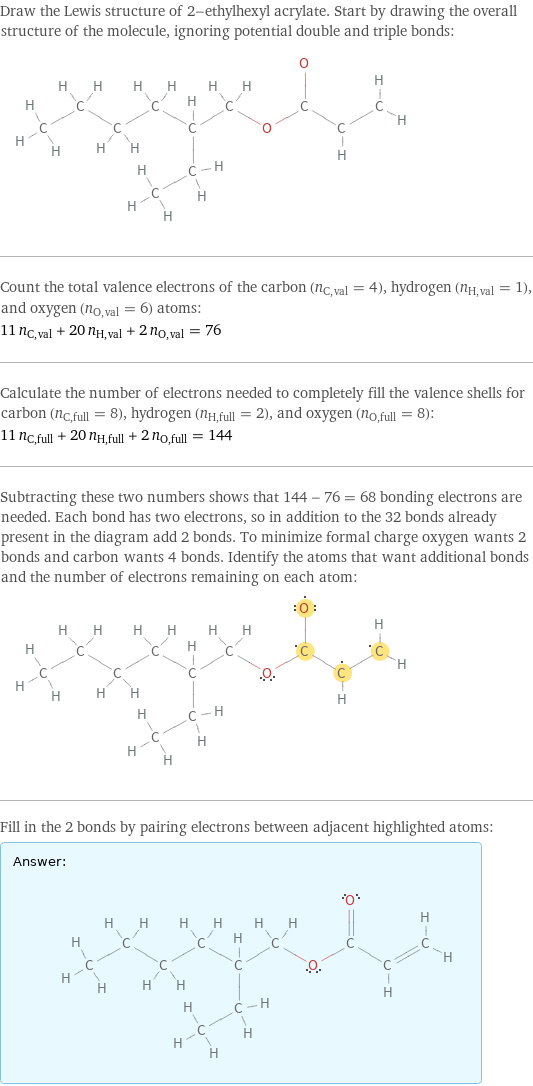
Draw the Lewis structure of 2-ethylhexyl acrylate. Start by drawing the overall structure of the molecule, ignoring potential double and triple bonds: Count the total valence electrons of the carbon (n_C, val = 4), hydrogen (n_H, val = 1), and oxygen (n_O, val = 6) atoms: 11 n_C, val + 20 n_H, val + 2 n_O, val = 76 Calculate the number of electrons needed to completely fill the valence shells for carbon (n_C, full = 8), hydrogen (n_H, full = 2), and oxygen (n_O, full = 8): 11 n_C, full + 20 n_H, full + 2 n_O, full = 144 Subtracting these two numbers shows that 144 - 76 = 68 bonding electrons are needed. Each bond has two electrons, so in addition to the 32 bonds already present in the diagram add 2 bonds. To minimize formal charge oxygen wants 2 bonds and carbon wants 4 bonds. Identify the atoms that want additional bonds and the number of electrons remaining on each atom: Fill in the 2 bonds by pairing electrons between adjacent highlighted atoms: Answer: | |
3D structure

3D structure
Basic properties
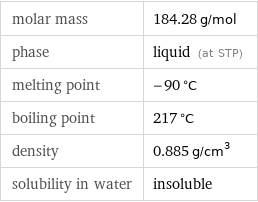
molar mass | 184.28 g/mol phase | liquid (at STP) melting point | -90 °C boiling point | 217 °C density | 0.885 g/cm^3 solubility in water | insoluble
Units

Liquid properties (at STP)
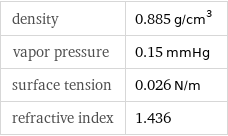
density | 0.885 g/cm^3 vapor pressure | 0.15 mmHg surface tension | 0.026 N/m refractive index | 1.436
Units

Thermodynamic properties
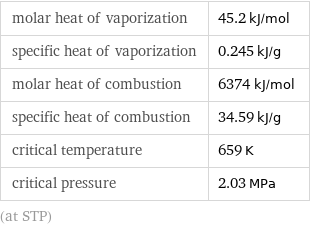
molar heat of vaporization | 45.2 kJ/mol specific heat of vaporization | 0.245 kJ/g molar heat of combustion | 6374 kJ/mol specific heat of combustion | 34.59 kJ/g critical temperature | 659 K critical pressure | 2.03 MPa (at STP)
Chemical identifiers
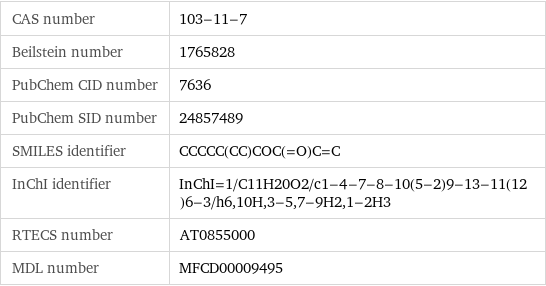
CAS number | 103-11-7 Beilstein number | 1765828 PubChem CID number | 7636 PubChem SID number | 24857489 SMILES identifier | CCCCC(CC)COC(=O)C=C InChI identifier | InChI=1/C11H20O2/c1-4-7-8-10(5-2)9-13-11(12)6-3/h6, 10H, 3-5, 7-9H2, 1-2H3 RTECS number | AT0855000 MDL number | MFCD00009495
NFPA label

NFPA label
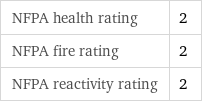
NFPA health rating | 2 NFPA fire rating | 2 NFPA reactivity rating | 2
Safety properties
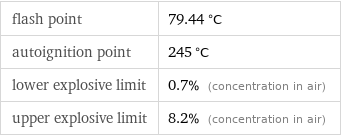
flash point | 79.44 °C autoignition point | 245 °C lower explosive limit | 0.7% (concentration in air) upper explosive limit | 8.2% (concentration in air)
Toxicity properties

RTECS classes | tumorigen | primary irritant